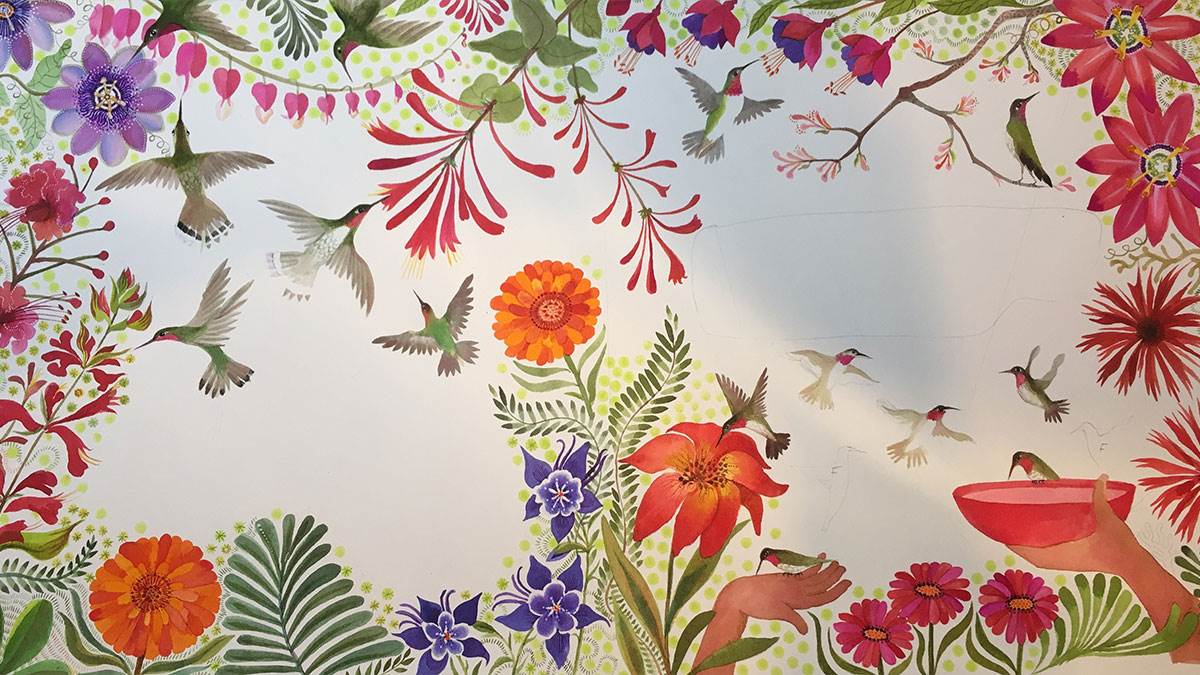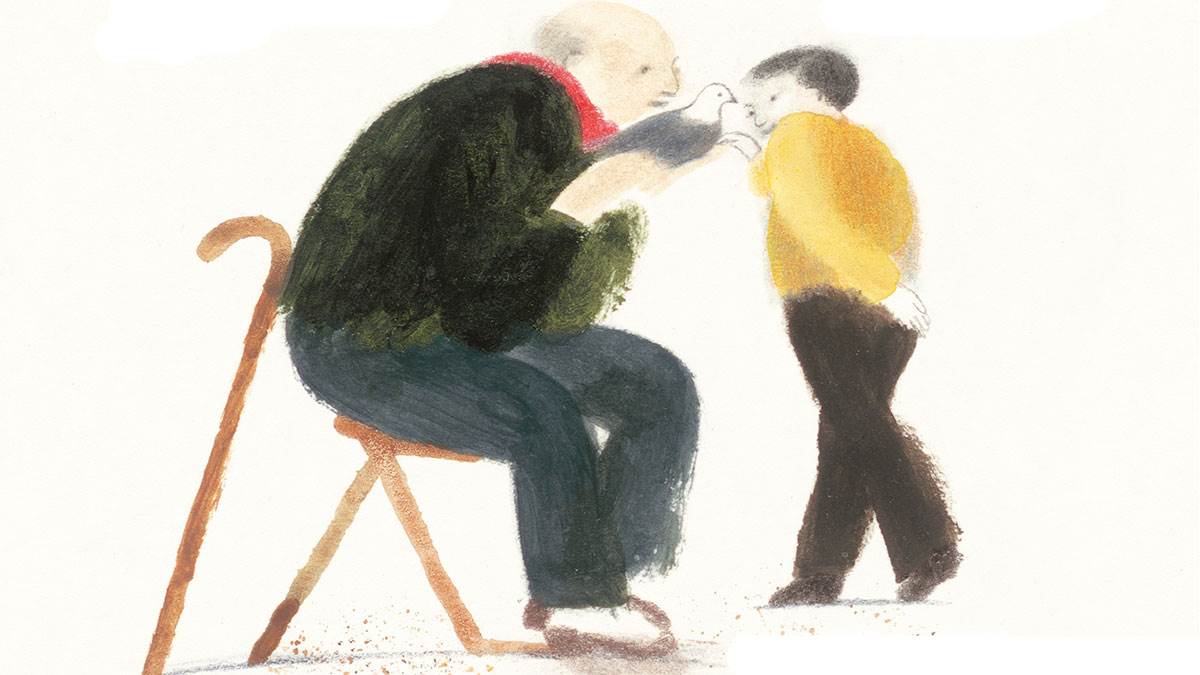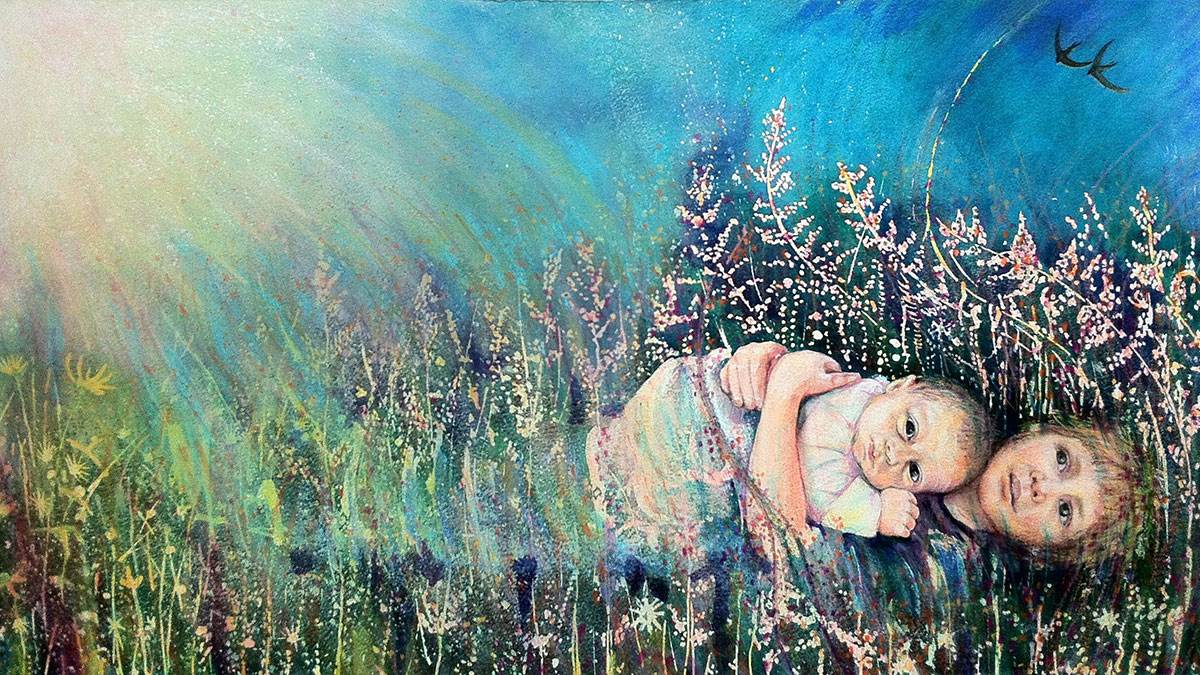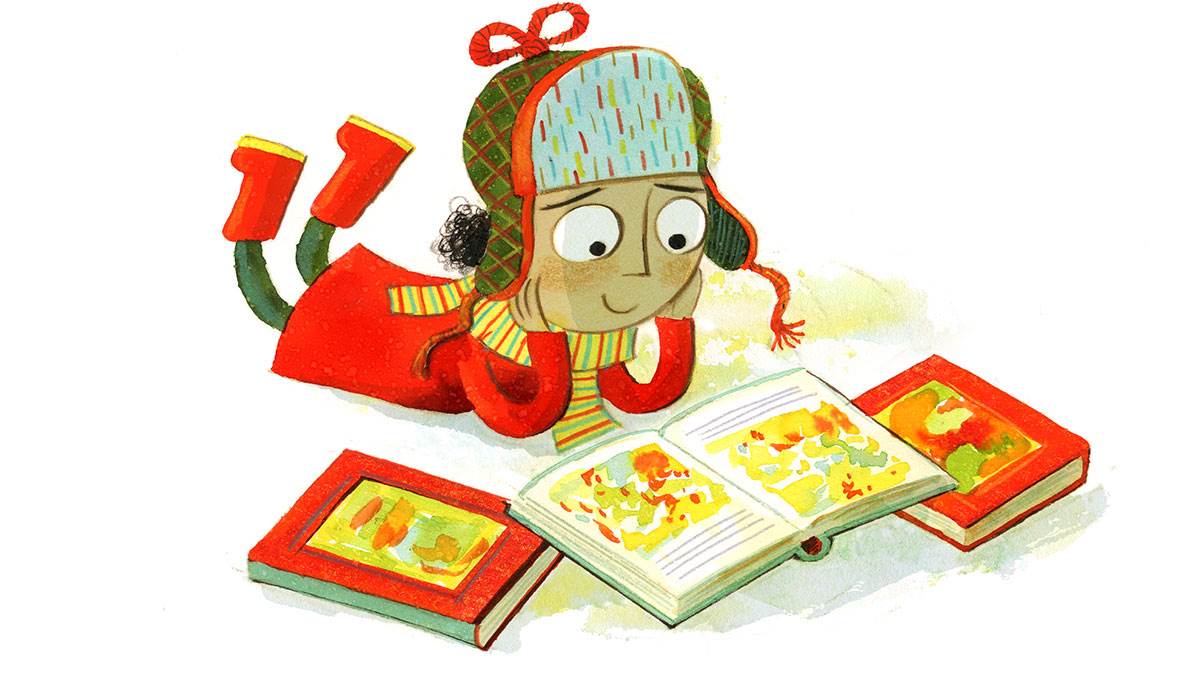How to get autumn to inspire your writing
Published on: 14 Hydref 2018
Author Nicola Davies turns to autumn: an in-between time of journeys and change. How does this season impact on her writing – and what ideas can it give you, too?

More about our Writers in Residence
Outside my study door, the wind is blowing apples onto the lawn. Up on the hillside, the trees are starting to turn yellow.
It’s the end of summer for sure, but I like autumn. I like the way everything in nature unravels, ready to be sewn up again in spring. And I like it because it’s a season of travel. Birds that came here in the spring are setting off for warmer places for the winter; most of them have gone already.
The swifts that nest in our village church tower went in August and now only the last few swallows and house martins are flitting over the fields, grabbing a few insect snacks before flying south. Lakes and estuaries in the north and east of the UK are already full of the cries of geese, and wading birds who come to us for the winter, because their nesting places in the far north are soon going to be covered in snow.
Soon you might see redwings (thrushes with a flash of red on their wings) or fieldfares (big purple-grey thrushes) on the grass in parks and in country hedgerows; they come here too for a milder winter than they’d get further north in Europe.
A little bit of nomad in us all

All over the world, birds, mammals and even insects are always moving from place to place – migrating to find food, places to rest, safety and home. Humans migrate too. Throughout the whole of history, humans have moved around the planet to find what they needed to survive or just to see what lay over the next horizon. There’s a little bit of nomad in all of us!
I’ve used animal and human journeys in many of my stories. In King of the Sky, illustrated by Laura Carlin, a little boy leaves Italy to find a new home in Wales and is helped to do it by a racing pigeon. In Perfect, illustrated by Cathy Fisher, a boy waits for the return of the swifts that nest in the roof of his house and for the birth of his little sister.

I have a new story not out until next year, but I can give you a little sneak preview. This one is set in Central and North America: two places, because the hummingbird in the story and the little girl both travel from tropical Guatemala to make a home in New York City.
The hummingbird stays for the summer, but the little girl has left Guatemala behind forever. The hummingbird makes her feel better about leaving her old home behind. The illustrations are so beautiful. I was very lucky to get to work with the artist Jane Ray, whose work I’ve known and loved for 40 years.
There’s a different kind of journey at the heart of The Day War Came. It’s about a little girl who has to flee her home in a war zone and ends up in a refugee camp. Most of the things I write about I have seen or done, but I have never been in a war zone or a refugee camp.
Of course, I did lots of research about what that was like, but in the end I just had to use my imagination. Imagination is wonderful – it can allow us to fly with swallows to their winter homes in Africa and it can help us to walk in the shoes of a person whose life is very different from our own. Imagination helps us to understand others, and to be kind.
Try the Three Is to write about birds and autumn

Information
Swallows are one of my favourite birds. I love their blue backs and red throats and their agile swooping flight. They travel 6,000 miles to South Africa for the winter, flying 200 miles a day, then back again in the spring. Remember, a swallow only weighs about 20 grams – that’s about the same as four sheets of paper! They can live for 50 years – so just work out how many miles they fly in that time!
Have a look at several bird migration routes...
Ideas
Lists are sometimes a good way to create a poem. Look at the route that swallows take on their journey and check out some of the places they might fly over… Choose the most interesting place names, make a list and see what you’ve got!
If you watch swallows getting ready to migrate, they chatter and fly around a lot. Then there’s a day when they just leave. If swallows could speak, what would they be talking about in those days before they go? The weather? The route? Other journeys they’ve made? Their fears for the dangers of their long trek south?
How do we humans see the swallows’ migration? What does it mean for us? The coming of winter, the end of summer, the promise of spring? The cycle of the seasons coming around again, like clockwork?
People once thought swallows hid at the bottom of ponds in the winter! It was only when birds were ringed that we found out that they fly all the way to South Africa and back again. Imagine you don't know where swallows go – write some explanations of why they disappear and where they go. You could try writing a myth that explains where they go in winter and how they return in spring.
Inspiration
There are loads of poems and stories featuring swallows, but here are three of my favourites:
- A Swallow by Ted Hughes
- The Happy Prince by Oscar Wilde
- and the last verse of John Keat’s Ode to Autumn.
But trawl through the poetry shelves of your library and you’ll find more!
Here’s my go at writing a swallow poem – just a small thought really, but it might help you make a start on yours!
It’s Time
It’s time, and we know it.
The low slant of the sun’s rays,
The sharp rain, the wind’s new bite,
All speak it:
South! South!
We thread the wires, chinking like beads:
Soon? Soon! We say
And scatter, to snatch the last fat blue bottles from the fading grass.






Add a comment